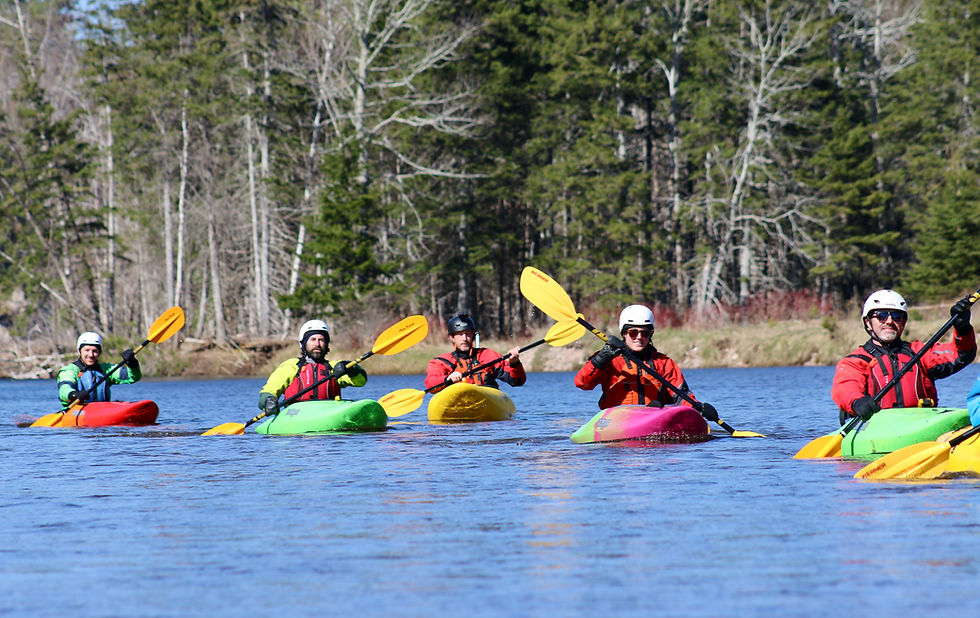3 Great Paddling Clothing Combos
- Matt DeLong
- Feb 20
- 3 min read
As kayakers we are all "between swims." We may not swim every time we're on the water but we will get wet. In Nova Scotia 10-11 months of the year (and all months on the ocean) we need to mitigate against hypothermia. As an instructor and instructor trainer who spends 100+ days on the water and who paddles 12 months of the year, here's the top three ways to mitigate against hypothermia with paddling specific clothing.
#1: A drysuit. This is the best protection most months of the year on all waters and 12 months of the year on the ocean. Layers underneath the suit can be increased or decreased depending on the water and air temperatures. Kayaking specific suits with a double tunnel to accomodate a sprayskirt work best for keeping the cockpit the most dry. All drysuits are not created equal. Our business has 7 drysuits for clients for our training programs and all are made by Kokatat. They have a great warranty, legendary customer service, and service their products. Another great brand is Immersion Research.
The greatest drawback to a drysuit is the cost. New suits can easily cost in the range of $1-2K. Whether or not a decision is made to invest in a suit depends on if it fits your budget and how much time you think you'll spend in it.

#2: A wetsuit/paddle jacket combo. I paddled with this combination of immersion wear for my first 10 years. My wetsuit was paddling specific (farmer john from MEC) and I had a variety of paddling tops ranging from splash jackets to dry tops (top with latex wrist and neck gaskets). This served me well for many years. The wet suit cost approximately $100 and the tops ranged from $50-$450.
The drawbacks to this combo include uneven insulation/warmth especially in the feet, despite whatever neoprene footwear one may use. As well, some may experience restrictions in movement otherwise absent with a drysuit.

#3: Synthetic clothing and wool layers with changes of clothing. If paddling lakes and class 1 rivers (no waves) in Nova Scotia, and class 1-2 inner harbour/protected ocean waters June - September it is at times possible to use this combination of clothing. When we guide clients in inner Shelburne Harbour in July and August, this is our "go to" paddling clothing. I wear clothing that dries quickly when it gets wet, including a top with long sleeves and UV protection. I and other guides also carry 20+L's of extra clothing in dry bags for ourselves and clients in the event of an accidental capsize and someone needs to get into warm dry clothing. The water temp this time of year in the inner harbour is well above 21 C and the air is often above 30 C.
The drawbacks to this combo is that paddlers mitigating against hypothermia this way can be limited (and if they aren't they are naive) to when and where they paddle.
It is prudent to take extra warm dry clothing no matter how the risk of hyothermia is being managed. Even if wearing a drysuit, I have layers I can change into if I'm cold and need to stop. We can exert ourselves at times and perspiration can cause us to become cool when we stop being active (I.e. stopping for lunch, etc.). Can hyperthermia be an issue with too much immersion wear? Absolutely. I know of an incident in recent years involving SAR where a drysuit necessitated an urgency call. But this is rare. It is much more likely we'll need to wear clothing to help mitigate against the cold. Stay safe and happy paddling!






